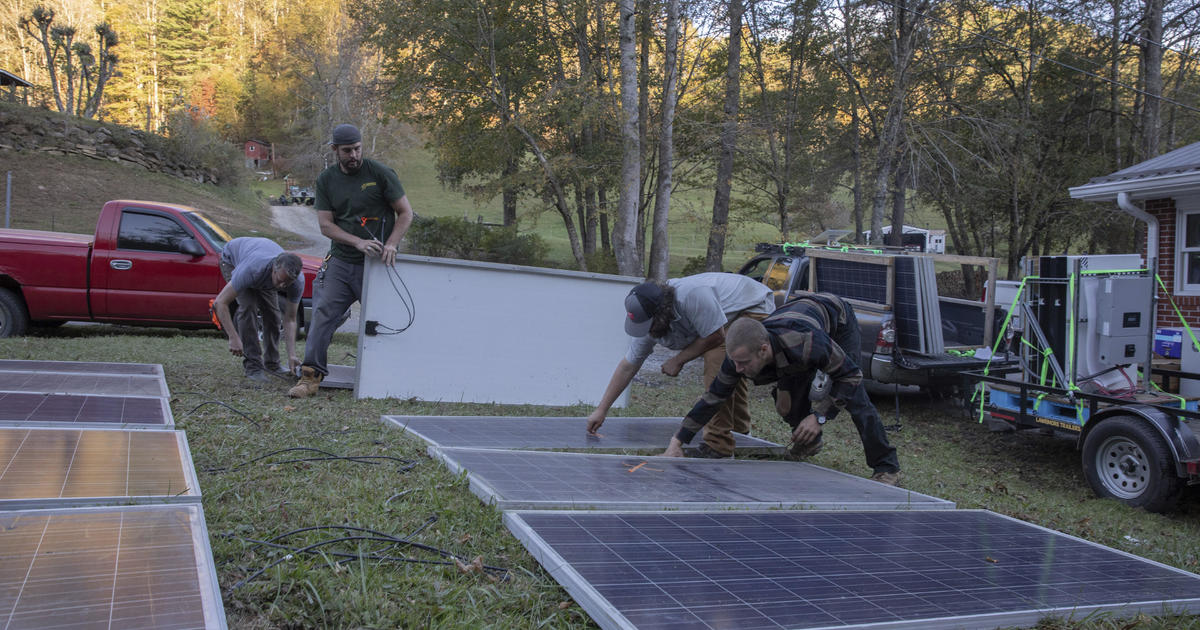Two weeks after Hurricane Helene ravaged the southeastern United States, leaving a trail of destruction and hardship in its wake, volunteers are stepping in to bring much-needed relief to those struggling in the aftermath. The storm, making landfall on September 26 as a Category 4 hurricane, caused widespread devastation across multiple states, including North Carolina, which was particularly hard hit.
Bringing Light to the Darkness
In the wake of the hurricane, many communities across western North Carolina found themselves without power, leaving them in the dark and struggling to access essential resources. The constant roar of gas generators, while providing a temporary solution, proved to be a costly and noisy nuisance, particularly for those relying on electricity for critical medical equipment. The Footprint Project, a nonprofit dedicated to sustainable disaster relief, stepped in to provide much-needed solar power solutions, offering a beacon of hope amidst the devastation.
Delivering Solar Power
The Footprint Project, working in conjunction with local solar installers, began deploying solar generators and panels to communities across the affected areas. These systems provided much-needed power for refrigerators to store medicine, oxygen machines and nebulizers for those with respiratory conditions, and water pumps, offering relief from the struggle of accessing clean water. The presence of solar power also brought much-needed light, enabling residents to charge their phones and stay connected with loved ones and emergency services.
More Than Just Power
The Footprint Project’s efforts extended beyond providing basic power needs. The organization is actively distributing other vital resources, including water filtration systems capable of extracting water from the air. These systems are proving to be invaluable in communities that have been cut off from their usual water sources. The organization also works to provide essential supplies like food, hygiene kits, and first aid kits, providing a vital lifeline to those in need.
Reaching the Most Vulnerable
The challenges of reaching remote and isolated communities in the mountainous regions of North Carolina are immense. Roads have been washed away, bridges are collapsed, and communication systems have been compromised. Despite these hurdles, The Footprint Project volunteers are going to great lengths to ensure that help reaches those most in need. Their efforts are being aided by local volunteers, such as glassblowers and solar installers, who are using their skills and resources to support the organization’s mission.
Bridging the Gap
While power crews from across the country work tirelessly to restore power infrastructure, the challenges remain significant. The Footprint Project understands that even once power is restored, the recovery process will take time, and many individuals and families will require continued assistance.
Takeaways
- Hurricane Helene highlighted the crucial need for resilient infrastructure and the importance of innovative disaster response initiatives.
- The Footprint Project is a shining example of how community-driven efforts can bring light and hope to those struggling in the wake of disaster.
- The use of sustainable energy sources like solar power is vital for disaster relief, particularly in communities reliant on power for medical care and essential supplies.
- The Footprint Project’s commitment to staying in the affected region for as long as necessary underscores the need for ongoing support and collaboration throughout the recovery process.
- The efforts of volunteers from all walks of life, united by a common goal, are a testament to the strength and resilience of human spirit.




